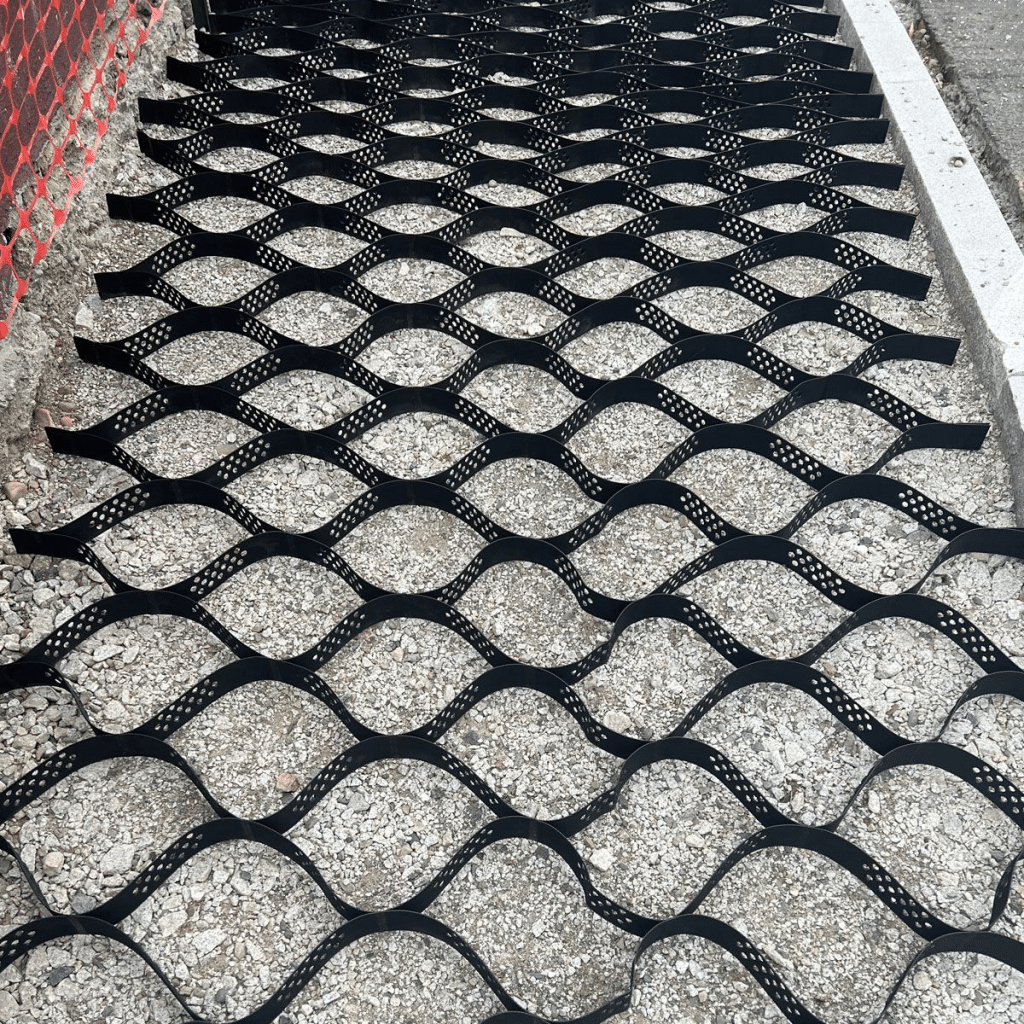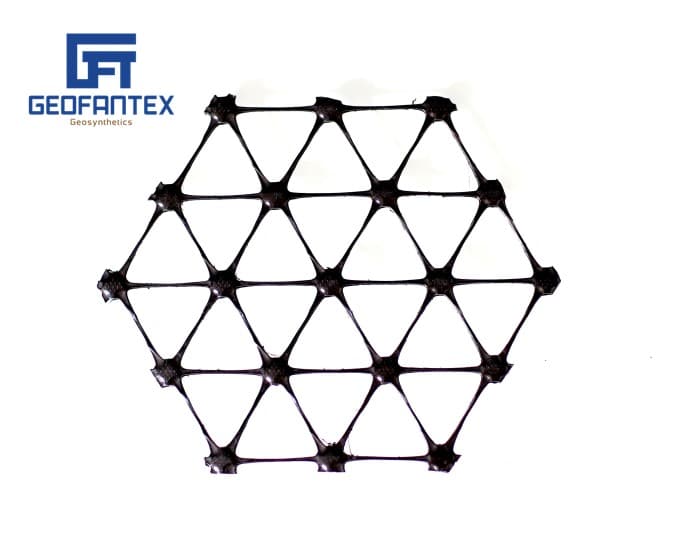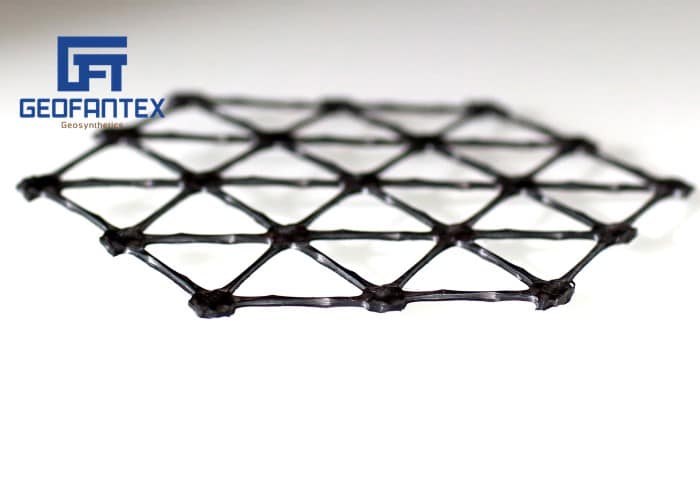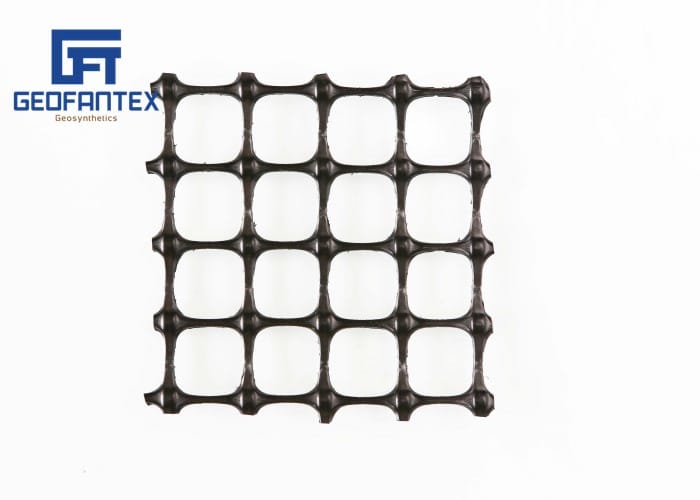+86-159 9860 6917
info@geofantex.com
geofantex@gmail.com
+86-400-8266163-44899
Geogrids are typically used in high-load situations, such as in agriculture or heavy construction, due to their greater strength compared to most geotextiles. Their low strain allows them to be strong in tension, with a stretching ability of only 2 to 5% under load. Geogrids come in two forms: uniaxial (one-way) and biaxial (two-way), each suited to different applications.
Uniaxial geogrids, also called “one-way” or “one-directional” geogrids, are strong in only one direction, even though they may appear similar to biaxial geogrids. They are typically used in scenarios where soil requires reinforcement in one direction, such as in retaining walls or slope reinforcement.
Biaxial Geogrid
Biaxial geogrids, also known as “two-way” or “bi-directional” geogrids, are equally strong in two directions. They can be used in retaining wall construction by rolling out along the retaining wall blocks, provided the roll width is wide enough to cover the geogrid design width. They are commonly used in roadway construction, including gravel driveways, and for foundation improvement applications.


What Is Ground Grid Used For?
DuPont Plantex GroundGrid is a versatile and flexible grid that is three-dimensional in structure, representing an innovative solution. This structure, which is based on geotextile materials, is designed to contain and stabilize aggregate, stone, gravel, or soil. It is a suitable option for creating stable surfaces that can accommodate pedestrian and vehicular traffic.
What Is A Geotextile Grid?
Geosynthetics, including geotextiles and grids, are frequently employed in civil engineering projects like constructing roads, retaining walls, and reservoirs. They are also utilized in smaller hardscaping projects to enhance durability, stability, and overall aesthetics.、
What Can I Use Instead Of Geogrid?
Use Woven Geotextiles Instead of Geogrids – US Fabrics – US Fabrics.Woven Slit Film Geotextiles: An Effective and Economical Solution for Base Stabilization Applications, as an Alternative to Polypropylene Geogrids
Polypropylene geogrids have gained popularity among civil engineers as the go-to geosynthetic for base stabilization, largely due to effective marketing and well-documented research. However, many specifiers have mistakenly viewed punched and drawn polypropylene geogrids as a unique technology, when in fact, they are a proprietary product. This has led to preferential testing methods and design “standards” that have hindered the development of performance-based design criteria and discouraged healthy competition. As an alternative, woven slit film geotextiles offer an effective and economical solution for base stabilization applications.
What Is The Cost Of Geogrid?
What is the Cost of Geotextiles and Geogrids? On average, the price of a geotextile and geogrid is $984, but prices can vary widely, ranging from around $558 to $2,168.



Get Free Sample
We’ll respond as soon as possible(within 12 hours)






















